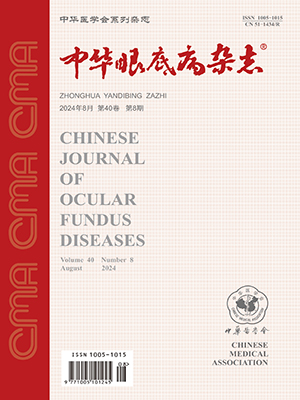| 1. |
Sepúlveda M, Armangue T, Sola-Valls N, et al. Neuromyelitis optica spectrum disorders: comparison according to the phenotype and serostatus[J/OL]. Neurol Neuroimmunol Neuroinflamm, 2016, 3(3): 225[2016-04-14]. http://europepmc.org/abstract/MED/27144216. DOI: 10.1212/NXI.0000000000000225.
|
| 2. |
Weinshenker BG, Wingerchuk DM. Neuromyelitis spectrum disorders[J]. Mayo Clin Proc, 2017, 92(4): 663-679. DOI: 10.1016/j.mayocp.2016.12.014.
|
| 3. |
Harjunpää A, Junnikkala S, Meri S. Rituximab (anti-CD20) therapy of B-cell lymphomas: direct complement killing is superior to cellular effector mechanisms[J]. Scand J Immunol, 2000, 51(6): 634-641.
|
| 4. |
Jade JD, Bansi S, Singhal B. Rituximab in neuromyelitis optica spectrum disorders: our experience[J]. Ann Indian Acad Neurol, 2017, 20(3): 229-232. DOI: 10.4103/aian.AIAN_499_16.
|
| 5. |
Pavanello F, Zucca E, Ghielmini M. Rituximab: 13 open questions after 20 years of clinical use[J]. Cancer Treat Rev, 2017, 53: 38-46. DOI: 10.1016/j.ctrv.2016.11.015.
|
| 6. |
Yang CS, Yang L, Li T, et al. Responsiveness to reduced dosage of rituximab in Chinese patients with neuromyelitis optica[J]. Neurology, 2013, 81(8): 710-713. DOI: 10.1212/WNL.0b013e3182a1aac7.
|
| 7. |
Wingerchuk DM, Banwell B, Bennett JL, et al. International consensus diagnostic criteria for neuromyelitis optica spectrum disorders[J]. Neurology, 2015, 85(2): 177-189. DOI: 10.1212/WNL.0000000000001729.
|
| 8. |
Zhou H, Xu Q, Zhao S, et al. Distinct clinical characteristics of atypical optic neuritis with seronegative aquaporin-4 antibody among Chinese patients[J]. Br J Ophthalmol, 2017, 101(12): 1-6. DOI: 10.1136/bjophthalmol-2017-310157.
|
| 9. |
Guo Y, Weigand SD, Popescu BF, et al. Pathogenic implications of cerebrospinal fluid barrier pathology in neuromyelitis optica[J]. Acta Neuropathol, 2017, 133(4): 1-16. DOI: 10.1007/s00401-017-1682-1.
|
| 10. |
Tradtrantip L, Yao X, Su T, et al. Bystander mechanism for complement-initiated early oligodendrocyte injury in neuromyelitis optica[J]. Acta Neuropathol, 2017, 134(1): 1-10. DOI: 10.1007/s00401-017-1734-6.
|
| 11. |
Pittock SJ, Lucchinetti CF. Neuromyelitis optica and the evolving spectrum of autoimmune aquaporin-4 channelopathies: a decade later[J]. Ann N Y Acad Sci, 2015, 1366(1): 20-39. DOI: 10.1111/nyas.12794.
|
| 12. |
Cree BA, Lamb S, Morgan K, et al. An open label study of the effects of rituximab in neuromyelitis optica[J]. Neurology, 2005, 64(7): 1270–1272. DOI: 10.1212/01.WNL.0000159399.81861.D5.
|
| 13. |
Kim SH, Huh SY, Lee SJ, et al. A 5-year follow-up of rituximab treatment in patients with neuromyelitis optica spectrum disorder[J]. JAMA Neurol, 2013, 70(9): 1110-1118. DOI: 10.1001/jamaneurol.2013.3071.
|
| 14. |
Damato V, Evoli A, Iorio R. Efficacy and safety of rituximab therapy in neuromyelitis optica spectrum disorders[J]. JAMA Neurol, 2016, 73(11): 1342-1347. DOI: 10.1001/jamaneurol.2016.1637.
|
| 15. |
Longoni G, Banwell B, Filippi M, et al. Rituximab as a first-line preventive treatment in pediatric NMOSDs[J/OL]. Neurol Neuroimmunol Neuroinflamm, 2014, 1(4): 46[2014-12-11]. http://europepmc.org/abstract/MED/25520954. DOI: 10.1212/NXI.0000000000000046.
|
| 16. |
Collongues N, De Seze J. An update on the evidence for the efficacy and safety of rituximab in the management of neuromyelitis optica[J]. Ther Adv Neurol Disord, 2016, 9(3): 180-188. DOI: 10.1177/1756285616632653.
|
| 17. |
Kim SH, Jeong IH, Hyun JW, et al. Treatment outcomes with rituximab in 100 patients with neuromyelitis optica[J]. JAMA Neurology, 2015, 72(9): 989-995. DOI: 10.1001/jamaneurol.2015.1276.
|




